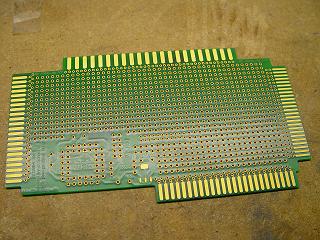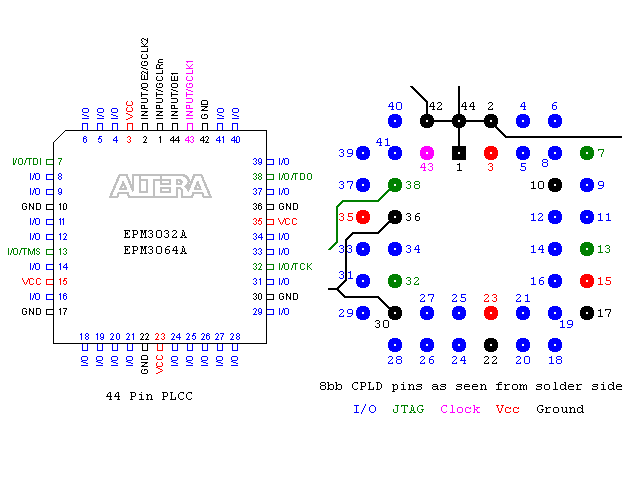

 |
8 Bit Baby. By Lee Davison. |
 |
 Introduction.
Introduction.
Building it.The 8 Bit Baby is a general purpose prototyping board for a range of 8 bit home computers. It is a plated through hole, gold plated, double sided board with a different card edge connector on each side. These are
44 pin, 0.154" pitch, for the VIC20 44 pin, 0.1" pitch, for the C64/C128 50 pin, 0.1" pitch, for the Apple II, Atari 8bit and others 50 pin, 2mm pitch, for the C16/116/+4 The 8 Bit Baby came with the needed surface mount 3.3 volt regulator.
Conclusion.The first problem came to light during construction. I'm and idiot, many people will confirm this, and one of the idiotic things I do is plug connectors in back to front. To avoid this I wanted to use a shrouded, keyed, IDC plug so I could never plug the 8 Bit Baby in backwards but there is not quite enough clearance between the PLCC socket and the IDC plug to allow this. Bother!
The board was populated with parts from the bits bin, the only change made was to omit one of the 5 volt decoupling capacitors, the one nearest the board edge, and replace it with a pair of pins so that the 8 Bit baby can be powered when not plugged in to the target system.
Finally.The 8 Bit Baby is a high quality product and an ideal entry point to the world of CPLD design, as well as a handy expansion board for a number of 8 bit home computers. Like any general purpose board it will never please all the people all the time and there are a few things I would have done differently ..
Made room for the shroud! Brought the CPLD pins out to pads. Included wired pads for an XTAL oscillator. Included pads for external power. Not grounded the OE1, OE2 and CLR pins, on both sides of the board no less! Not bothered with the clock port pads. As it is though I'm happy with mine.
Always handy to have is the pinout for the CPLD looking at the solder side of the board.

| Last page update: 4th March, 2006. | e-mail me
 |